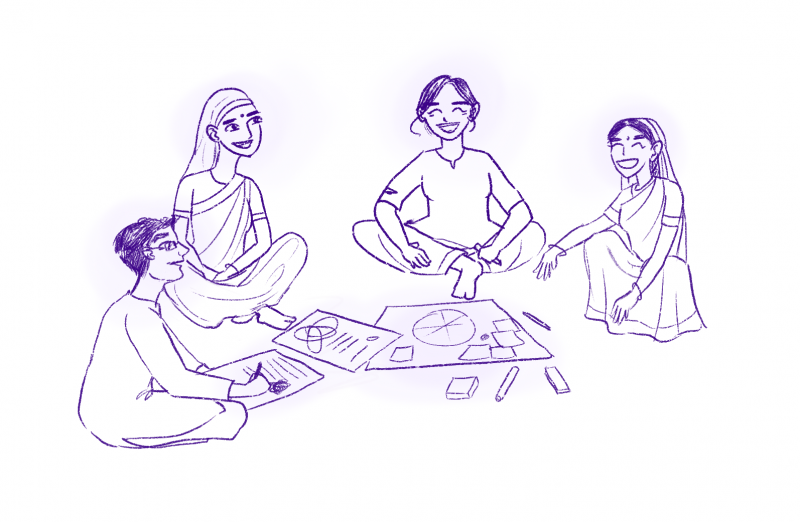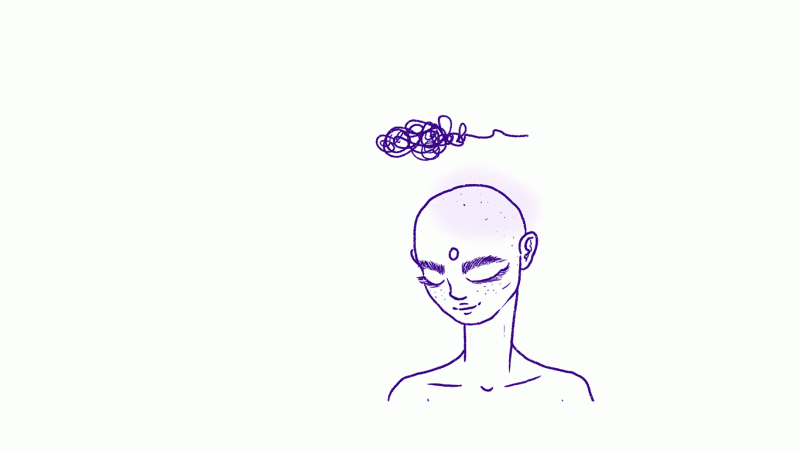Practicing Design with/for the Hyperlocal.
Posted on October 17, 2019Connecting local knowledge to Design Practice.

Design is to plan for the outcome, according to the Cambridge dictionary. But as I ponder upon the different stages of design’s order I question myself if we have grown from only from a western worldview of design? Unlike traditional art and craft, design as a discipline developed well after the colonial period in the mid-twentieth century; as such, design research has tended to disregard Indigenous culture as having little to offer the disciplines. Indigenous visual-spatial strategies are tacit within both the aesthetic language and holistic approaches to design language by design modernists, in particular, numerous Bauhaüsler [1].
In my undergraduate design training, we studied art from all across cultures. Design thought was limited to the western thought as if the design methods were universally applicable and adaptable anywhere. With a new momentum of design practice penetrating in every industry and design practice growing from artifact making to designing for complex systems. When designers just use design tools superficially while approaching new culture contexts ignoring to focus on local knowledge and co-creation, they tend to drive from a savior complex attitude. When designers head out on the field and call themselves problem solvers that alienate the local community who must have been solving problems from a period of time before the designers even interjected.
In my limited understanding, the design is the active human intersection between materials products, social interactions, and environments; therefore, design occupies a pivotal position for any change in cultural direction. In modern society, the design is central to production-oriented culture—a position that limits and directs design possibilities. Despite this control, design continues as a universal human process of engagement with the world through materials culture utility and possibilities. [2]There seems to be a gap in understanding from what design could do if it was situated into hyperlocal contexts and how might that process be different? What if instead of taking big messy world problems we addressed at hyper-local problems. By addressing mini-systems from the viewpoint of local knowledge? Often people living in the problem will have more insights. Sometimes the insights would be hidden in their culture, narratives, folktales. These nodes in the system can be overlooked by just studying the present design problem in a vacuum.
What if we leveraged the inside expertise of communities and created change through their self organized movements instead of disrupting their lives through new knowledge introduced by outsiders. Designer as a “universal problem solver” stepping in social issues can often prove to be problematic. How might we view this differently?
SELF CHECK-INS-GROUP CHECK-INS
What is my purpose? What are my values? What do I bring to the team? What can I learn from the people I am surrounded by? As diversity within teams grows and multidisciplinary attitude is embraced the question remains how multi-disciplined is the team? Do we possess differences in the field of study? What are their lived experiences? Often the known knowledge of biases we pose around the issue can stand in the way during research, so having this check-in time to time would help in staying conscious and dive deeper to better understand and learn from those who do.
LOCAL IS NOT UNIVERSAL AND UNIVERSAL IS NOT LOCAL
A digital health wearable tied with a black thread around a child’s neck might be compared to the branding of cows for some and hence looked down upon. Both can be seen as offensive in some contexts but the black thread in local communities of Rajasthan India was considered auspicious and locals wore it to ward evil eye (बुरी नजर) hence the wearable as a foreign object was embraced due to its cultural significance to the local community and celebrated locally.
 Fig: On the left baby wearing Khushi Baby[4] pendant(wearable health record). Left branded cow.
Fig: On the left baby wearing Khushi Baby[4] pendant(wearable health record). Left branded cow.
We cannot propose solutions in communities that have been living with the trouble for ages! Local knowledge is as important as universal knowledge and finding a good balance between them while designing might turn important.
CO-CREATE
Steven Johnson in his book emergence talks about self-organizing systems. The hierarchy devoid ant colonies who make humongous colonies and function in groups completely self-organized is astonishing for us to imagine. But that got me wondering if co-creation methods in design could tap onto these self-organizing patterns when designing for hyper-local contexts. What would that look like? Social designers can facilitate design-led practices for emergence through participatory design methodologies especially for tacit knowledge that is set in the context of local issues.
As sense makers of the world we need to unpack different manifestos around design practice and that’s possible only if we step away from tools as methods to inform but rather version them-create new ones for local contexts, especially the eastern design world which is untapped for potential and often just mimicking what worked on one side of the world. So I strongly feel local knowledge and un taping hyper-local potential in design for social change is essential for bringing out the best to offer.
VS
KhyaliPulao
References
[1] Indigenous Knowledge and Respectful Design: An Evidence-Based Approach Norman W. Sheehan
[2] Indigenous Knowledge and Respectful Design: An Evidence-Based Approach Norman W. Sheehan
[3]www.core77.com/posts/24424/Why-We-Need-a-New-and-Hyper-Local-Model-for-Design-Activism-by-Julie-Kim
[4] http://www.khushibaby.org
